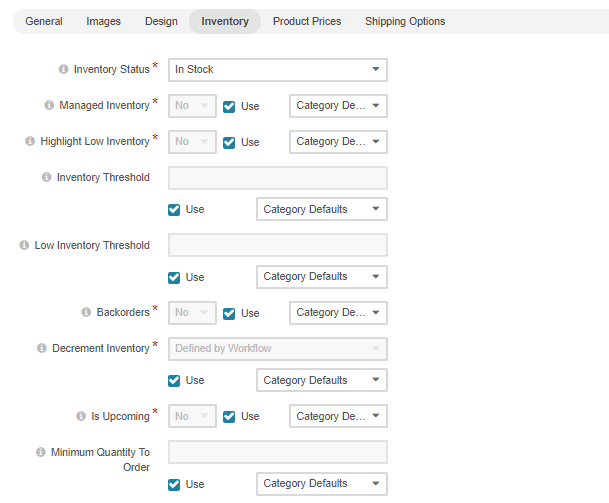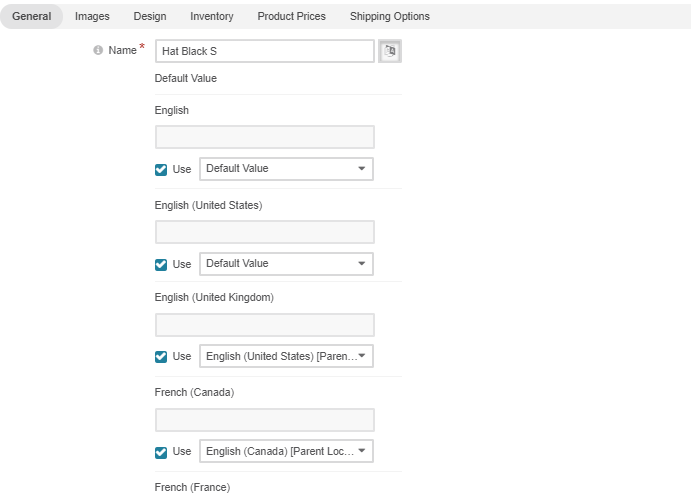Important
You are browsing documentation for version 5.0 of OroCommerce. Support of this version ended in January 2025. Read the documentation for version 6.1 (the latest LTS version) to get up-to-date information.
See our Release Process documentation for more information on the currently supported and upcoming releases.
Create a Simple Product
Hint
This section is part of the Product Management topic that provides a general understanding of the product concept in OroCommerce.
See a short demo on how to create a simple product, or keep reading the step-by-step guidance below.
To add a new simple product and make it available in the master catalog (for internal product management) and for purchase in the storefront:
Navigate to Products > Products in the main menu.
Click Create Product.
Select the Simple product type.
Select the product family to define the product options and details that will be filled in the following steps.
Place the product under the necessary category in the master catalog by clicking on the category. Use the search to limit the list of categories.
Click Continue.
In the General section:
Enter the product SKU and name.
Enter a URL slug that is used to build a human-readable URL for the product page in the storefront.
Select the product status: Enabled or Disabled. When disabled, the product is not included in the catalog and is considered to be a draft.
Specify whether the product should be featured or not by selecting Yes or No respectively.
Specify whether the product is a new arrival. When set to Yes, the product is highlighted in the storefront.

For Brand, select a brand from the list. Use to view the list of all available brands. To create a new brand, click +.
Configure units of quantity:
In the Unit Of Quantity list, select the main product unit that is shown by default when you view the product details in the storefront. Available options: each, item, kilogram, piece, set.
In the Precision field, set the acceptable precision (number of digits after the decimal point) for the quantity that a user may order or add into the shopping list. Items and sets are usually whole numbers, and units like kilograms may get precision of 2 to allow buying a custom volume (e.g., 0.5 kg).
Click + Add to add more than one unit of quantity.

For every additional unit, provide precision and conversion rate compared to the main unit of quantity.
Select the Sell checkbox to enable selling the product in these units. Unless Sell is selected, the unit is considered a draft.
You can delete the unnecessary unit of quantity by clicking the Delete icon next to it.
In the Tax Code list, select the product tax code that defines the percentage of tax that can be included in the purchase order during the checkout.
The tax calculation process depends on the tax jurisdiction that you decided to use in OroCommerce and other tax calculation options.
In the Short Description section, provide a short but meaningful default description that best positions the product for your target audience and will appear in the catalog listing. Move from tab to tab to localize the description by setting the required fallback option. You can select whether to fall back to the default value, parent localization, or a custom value from the dropdown. When selecting the custom value, provide the localized version of the short description in the text field.
In the Description section, provide a long default product description that will appear on the product view page. Move from tab to tab to localize the description by setting the required fallback option. From the dropdown, you can select whether to fall back to the default value, parent localization, or a custom value. When selecting the custom value, provide the localized version of the long description in the WYSIWYG field. For more details on WYSIWYG management, see the WYSIWYG Editor topic.
In the Image section, add a new image to the product by clicking +Add Image and then Choose Image. You can either upload a new image or select the required one from the list of available digital assets records.
Then, select whether to show the image as main (the image is used in the product details view), listing (the image is shown in the catalog listing), or additional (additional product pictures). All three categories can be selected at the same time. To remove the image, click the Delete icon next to it.
In the Design section, select the page template from the drop-down.
In the SEO section, provide the following information:
Meta Keywords — Enter the meta keywords for the product. A meta keyword is a specific type of meta tag that appears in the HTML code of a web page and helps tell search engines what the page’s topic is.
Meta Title — Enter the meta title for the product. A meta title is seen by search engine users and helps a search engine index the page.
Meta Description — Enter the meta description for the product. A meta description summarizes a page content. Search engines show a meta description in search results if they see the searched phrase in the description.
In the Inventory section, provide the following information:
Field
Description
Inventory Status
This setting enables you to define and modify status information for the stock of the product.
Managed Inventory
This setting defines the method for inventory management. With Use category defaults, the product’s Manage Inventory inherits the setting selected for the product’s parent category. With Use system config, the product uses the system configuration setting. Selecting Yes enables interactive updates based on the product inventory information from the Inventory > Warehouses section. Selecting No disables connection to the inventory, and uses the static Inventory Status value.
Highlight Low Inventory
This option defines if low inventory for products is displayed in the storefront.
Inventory Threshold
A minimum quantity of the product treated as In stock. When a product quantity drops below this value, the product inventory status becomes Out Of Stock.
Low Inventory Threshold
The minimum stock level defined for the product. Reaching the defined level will trigger a warning message to the buyer in the storefront.
Backorders
A flag that indicates whether OroCommerce accepts backorders (EE feature). When set to Yes, buyers and salespeople can order products in quantities not currently available in the warehouses. The remaining portion of the order will be sustained until the product is back in stock.
Decrement Inventory
A flag that indicates whether OroCommerce decrements inventory upon order. A product quantity can become negative when both Decrement Inventory and Backorders are enabled.
Minimum Quantity to Order
A minimum quantity that a buyer or salesperson can claim in the RFQ, customer order, quote, or a shopping list.
Maximum Quantity to Order
A maximum quantity that a buyer or salesperson can claim in the RFQ, customer order, quote, or a shopping list.
Is Upcoming
This option informs a customer that the product of the selected category is not in stock currently but will be available later. When set to Yes, an additional Availability Date is displayed. To remove the upcoming products label, set the option to No or customize the required behavior in the system configuration.
Availability Date
The date which indicates the exact date and time since the selected product will be available in stock.

Add fixed product prices in the Product Price section. Note that fixed prices override the automatically generated price lists.
Click +Add, select a price list, and specify quantity, units, price value, and currency.

In the Shipping Options section, click +Add Options and provide unit, weight, and weight measuring unit, dimensions (width, height, depth), and dimensions measuring unit and freight class.
Review translation rules for a product name, URL slug, long description, and short description.
To enter translation manually, click , clear the Use <parent translation> checkbox next to the required language, and provide your translation version.

Click Save.

